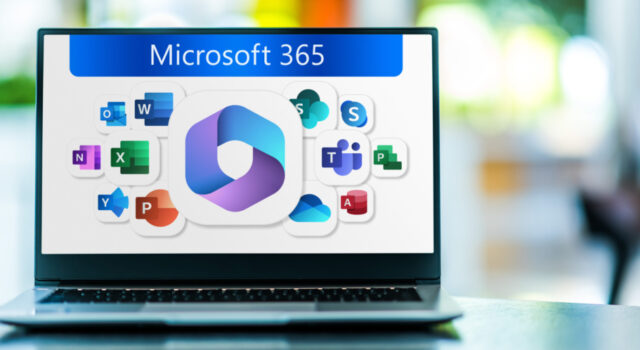For years, cyber crime has been a concern for organisations of all sizes. More recently, data has shown that cyber attacks are rising for all types of businesses, leading to protection becoming an even greater priority.
As the risk level rises, it’s important that both your businesses and your customers are covered against attacks. And one of the most common is Distributed Denial of Service (DDoS) attacks, particularly as more businesses operate through websites and cloud-based servers.
This guide explains everything you need to know about DDoS attacks and how to prevent them.
What is a Distributed Denial of Service (DDoS) Attack?
A Distributed Denial of Service (DDoS) attack is one of the most popular forms of cyber attack. For criminals, it’s low cost and relatively easy to execute, making it a low-effort approach for significant financial potential.
A DDoS works by overwhelming your website or servers with traffic. Every time a user visits your website, it requires access to the website’s content. When hit by unprecedented demand, it results in either a long delay for a user to view the content on the website or a server failing completely. The latter renders your organisation’s website completely inaccessible.
From a high level, a DDoS attack is like a traffic jam clogging your IT infrastructure up like a motorway, preventing regular traffic from arriving at its desired destination. Criminals can then demand a ransom to restore servers or steal data while you are distracted.
Exploited machines can include computers, laptops and other networked resources such as IoT devices. DDoS attacks can be targeted at any endpoint that is publicly reachable through the Internet, so if your endpoints are exposed.
Some of the common symptoms of a DDoS attack includes the slowdown of your business network, spotty connectivity on a company intranet or intermittent website shutdowns. If your business network is experiencing a lack of performance that seems to be prolonged or more severe than usual, the network likely is experiencing a DDoS attack and your business should take action immediately.
What are the consequences of DDoS attacks?
Slow system or broken websites are a pain. But DDoS attacks are more than just an inconvenience; they can have significant repercussions on your business. These include:
- Loss of revenue: When a website or online service is unavailable due to a DDoS attack, businesses can experience substantial financial losses. Customers may be unable to make purchases, access important information or use essential services. They may even go to a competitor with a working website.
- Damage to reputation: A DDoS attack can severely damage a business’s reputation. Customers may perceive the company as unreliable, leading to a loss of trust and potential business.
- Operational disruption: DDoS attacks can disrupt critical business operations, such as customer service, online banking or supply chain management. This can lead to inefficiencies, decreased productivity and potential legal liabilities.
- Legal and regulatory consequences: In some cases, DDoS attacks can violate laws and regulations, resulting in legal action and financial penalties. Businesses may also face regulatory scrutiny and potential fines.
- Data breach risk: DDoS attacks can sometimes be used as a diversionary tactic to cover up other malicious activities, such as data breaches. By overwhelming a network with traffic, attackers can gain unauthorized access and steal sensitive information.
What are the types of DDoS attacks?
There are different types of DDoS attacks, targeting varying network components. Here are the ones that could impact your business:
- Volume-based DDoS attacks: A volumetric DDoS attack is the most common DDoS attack. The goal is to flood the network layer with a substantial amount of seemingly legitimate website traffic. Because the bot floods your business network ports with data, the machine continually has to deal with checking the malicious data requests and doesn’t have any room to accept legitimate website traffic. Volume-based attacks include UDP floods, amplification floods and other spoofed-packet floods.
- Protocol attacks: A protocol DDoS attack renders a target inaccessible and focuses on damaging connection tables in network areas that deal directly with verifying connections. It includes SYN flood attacks, reflection attacks and other protocol attacks. Protocol DDoS attacks basically work by sending successively slow pings, deliberately malformed pings, and partial packets. This can cause the attacking computer to memory buffer the target to overload and potentially crash the system. A protocol attack can also target firewalls. This is why using a firewall alone to protect your business will not stop denial of service attacks.
- Resource (application) layer Attacks: These attacks target web application packets to disrupt the transmission of data between hosts. Application layer DDoS attacks make use of the application layer focus primarily on direct Web traffic. Potential avenues include HTTP, HTTPS, DNS, or SMTP. Application-layer DDoS attacks, however, are not as easy to catch or identify as they typically make use of a smaller number of machines, sometimes even a single device. Therefore, the server can be tricked into treating the attack as nothing more than a higher volume of legitimate website and user traffic.
How can your business protect itself from DDoS cyber attacks?
The best way to protect your business against DDoS cyber attacks is by engaging strong IT security practices.
Secure practices include complex passwords that change on a regular basis, multi-factor authentication, anti-phishing methods, and firewalls that are secure enough to allow little outside traffic. While these measures alone will not stop DDoS, they do serve as a critical security foundation.
You should also seek to develop a DDoS prevention plan within your business IT strategy, so you can be much better prepared for when a DDoS attack hits your company network. Here are some things to consider as part of your plan:
A systems checklist
It’s imperative that your organisation develops a full list of assets you should implement to ensure advanced threat identification, assessment and filtering tools. This may include endpoint protection or firewalls.
You should also check if security-enhanced hardware and software-level protection is in place.
Form a response team
Key members of your team need to have defined responsibilities to ensure an organised reaction to the attack as it happens. Set up your team in advance and clearly document who is responsible for what should a DDoS attack be successful.
Define notification and escalation procedures
Should a DDoS attack occur, it’s important that your team members know exactly whom to contact in case of the attack and at which stage they are needed.
Your organisation should also have a list of internal and external contacts who should be informed about the attack. The development of communication strategies with your customers, cloud service providers and any IT security vendors should also be implemented.
DDoS protection and the cloud
Another way to help mitigate the risk of a DDoS attack is to leverage the power of the cloud to a specialist outsourced provider. The cloud has far more bandwidth and resources than a private network does. With an increased magnitude of DDoS attacks, solely relying on an on-premises solution increases the likelihood of hardware failing completely.
Cloud-based solutions such as Microsoft Azure can absorb malicious traffic before it reaches its’ intended destination – which is your organisation’s server.
How does Microsoft Azure prevent DDoS attacks?
Microsoft Azure is a cloud computing platform that offers computing, storage, networking, database, analytics and more.
By implementing Microsoft Azure, you can lessen the risk of a DDoS attack. It provides multi-layered, full-stack DDoS protection when used with a web application firewall, and has the ability to detect over 60 different attack types, protecting against the largest known DDoS attacks.
The built-in protection within Microsoft Azure blocks attack traffic and forwards the remaining traffic to its intended destination. Within a few minutes of attack detection, you are notified through Azure Monitor metrics.
By configuring logging on DDoS Protection Standard telemetry, you can write the logs to available options for future analysis. This data within Azure Monitor for DDoS Protection Standard is retained for 30 days. The intelligent traffic profiling feature learns your application’s traffic over time. It then selects and updates the profile that is the most suitable for your service, adjusting as traffic changes over time.
Should an attack occur, detailed reports are available in five-minute increments and a complete summary after the attack ends. Stream mitigation flow logs to an offline security information and event management (SIEM) system for near real-time monitoring during an attack. Alerts can be configured at the start, during, and stop of an attack using built-in tools. The alerts within Microsoft Azure integrate into your operational software like Microsoft Azure Monitor logs, Splunk, Azure Storage, Email and the Azure portal.
Protect your business against DDoS attacks with Infinity Group
We are a team of cyber security experts, backed by Microsoft accreditation and compliance to ISO standards. As such, we’re equipped to help you protect your business against a range of cyber threats, including DDoS attacks.
From providing practical advice to strengthen your IT security posture, managing your security operations or getting you started with tools like Azure, we can help you build a plan that gives you optimal protection within your budget and resource constraints.
Get in touch today to find out more – or hear more from our security experts by signing up for our Get to Secure video series.


